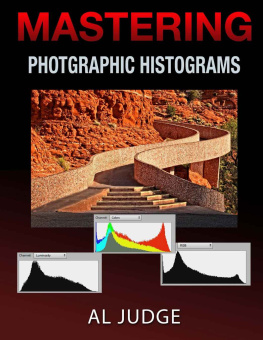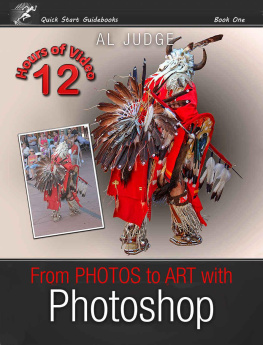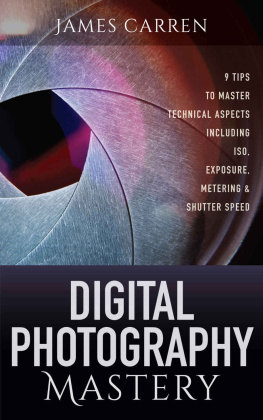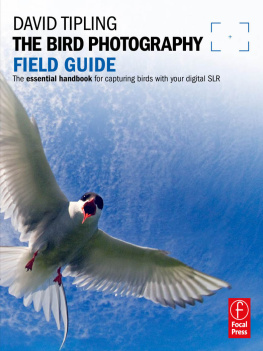Mastering Photographic Histograms
By Al Judge
Prescott, Arizona
Copyright 2016 by Al Judge
Allimages and illustrations in this book are copyrighted and the property of AlJudge, with a few exceptions.
Imagesfrom other sources are properly attributed below the image.
www.aj-foto.com and www.AJPhotoBooks.com
Introduction
Overview
In this relatively shortand highly illustrated book we will develop the concept of Photographic Histograms from the ground up. Bytaking small steps, I hope that your understanding will occur in a way that iseffortless and long lasting.
Histograms are intimidating formost people who are new to Digital Photography.
Histograms were nota part of film photography, so even experienced film photographers often haveto learn this new skill.
Key principles will be repeated numerous timesduring the presentation. Hopefully, this will help you to retain theseimportant lessons. Please forgive the redundancy. We will be covering a lot of material andrepetition will help you to remember key concepts.
Photographic Histograms exist for the purposeof fine-tuning your exposure settings in the field and maximizing theimpact of your images in the post-processing phase Photoshop or a similarediting program.
Never use the LCD screen on your digital cameraas an indicator of proper exposure ambient light and the backlight setting onyour camera can produce misleading information about exposure. It should beused for composition and focus only. The histogram should be your primarytool for evaluating exposure.
Mostdigital cameras have the ability to display a histogram . The two images below (Figure1) were borrowed from a Nikon website. Most cameras will give you a choiceof just the LuminosityHistogram (Left)or Luminositywith Color Channels (Right). A Color Channel Histogramis a histogram based on a single primary color Red, Green, orBlue.
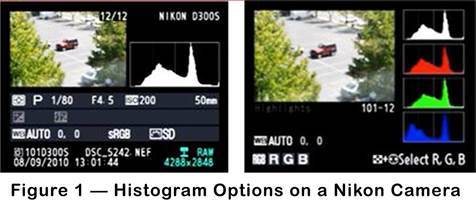
ImageSource: https://support.nikonusa.com/app/answers/detail/a_id/6803/~/display-histogram -on-camera
In my book, Tricks and Tips , I introduce my readersto the ExpoDisc . This is the only toolthat I trust as much as the histogram and, in fact, it mustbe used in conjunction with the histogram. When the ExpoDiscis used, the proper exposure appears as a vertical line at the midpoint of the histogram(Figure 2). Often in bright sunlight it is difficult to see theentire histogram. I placed a dot of White Out on my LCD at thecenter of the histogram. When I see a vertical line passingthrough the white dot, I know that I have the correct exposure. The ExpoDiscalso has the benefit of setting the White Balance.
http://www.expodisc.com/
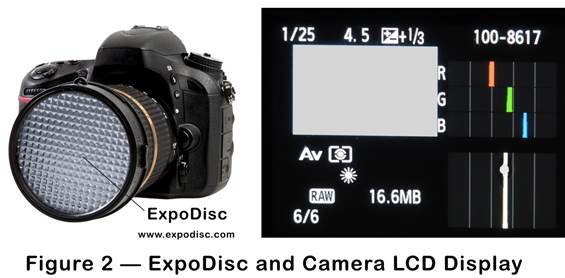
AQuick Look Ahead
InChapter One, we will start by creating a simple histogram based on the ExposureZones System created by Ansel Adams and Fred Archer. Thiswill not only define histograms but will help you to understandtheir relevance in DigitalPhotography .
ChapterTwo will be a short detour from our discussion of histograms, inorder to develop a better understanding of how colors are treated inPhotography. This knowledge will make our study of histogramsmore meaningful and less confusing. This is an important topic, since coloredlights act differently than colored pigments. We will discuss why this istrue. The information in this chapter goes beyond the topic of histograms. This background will clarify how colors are treated in digital photography andhelp to demystify this topic.
ChapterThree is an in-depth look at the many faces of histograms. By the endof this chapter, you should be very comfortable with the concept of histogramsand confident enough to use them effectively.
ChapterFour is dedicated to examples of photos and analyzing their histograms.
Ihave also included a Glossary of Terms at the back of the book.
My Approach & Philosophy
For me, time is my mostvaluable asset. I only have so much left, I dont know how much is left, and Ireally hate wasting it. With that in mind, I really appreciate it when I reada non-fiction book that is content-dense. By that I mean, very little wastedrhetoric. A certain amount of non-specific dialog is necessary to establishrapport with readers, but then I get anxious to learn something and hate fluffand colorful banter that doesnt enhance my learning.
Because of this personalbias, I tend to write books that are content-dense, even when they involvereal-life stories to illustrate key points. This book is no different.
My goal is to help youmove from your current level of photographic expertise to total control andconfidence in the most efficient way possible.
Throughout this book, Iwill often use initial caps, all caps, bold fonts, and italics for emphasis. With so much content, I want to be certain that key points are recognized assuch.
I cant guarantee greatworks of art by tomorrow, but I can give you an important tool inyour quest to achieve that goal in the time it takes to read this book.
That is not to say thatthis book alone will teach you everything that you need to know about PhotographicHistograms . I know some verysuccessful Master Photographers who still read about photography every day. Soif they are still learning new things after 30 or 40 years in the profession,there is a limit to what I can actually cover effectively in a book. With thatin mind, I have tried to cover the most important information in enough detailthat it will accelerate your learning significantly.
After writing my firstdraft of my first book, I read some best sellers on photography. I wanted tobe certain that I had something to bring to the party. The thing thatseemed to be most absent in other books was visualization aids.
Like most people, Iunderstand things by visualizing them. I form an image in my mind when peopleexplain something and I use that image to follow the discussion. If my imageis erroneous, I will have a difficult time following the discussion. If I amunable to modify my mental image enough to get the points being made, I goelsewhere and research the topic until I have enough information to completethe puzzle. In my own personal journey in the world of photography, I havediscovered that photographic terms are commonly used without definition andthat parts of the camera are often referred to as if we are all technicians whocould repair a camera in our sleep.
Ihave decided to take a slightly different approach than others have in writing photographybooks. I believe that if you understand how a camera works, everything elseabout photography will make more sense. I could simply tell you that youneed a large aperture setting when you make portraits of your spouse and kids. I could also tell you that histograms are used to fine-tuneexposure settings. This is what most books on photography will tell you.
But what if you understood whythese settings work so well and had a mental image of how these settingsaffect the light entering the camera?
With this understanding, everyimage that you capture will teach you something of real significance not justgive you a vague idea of what works and what doesnt.

